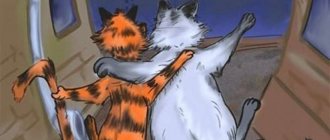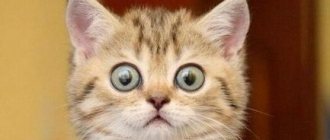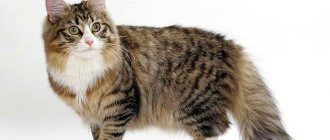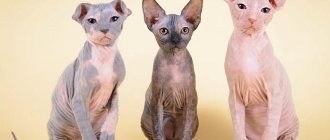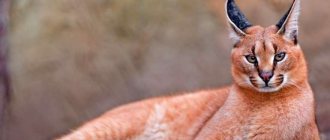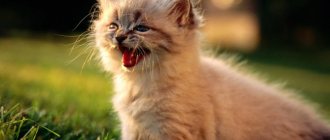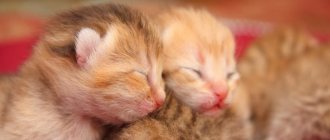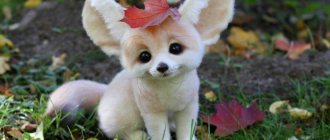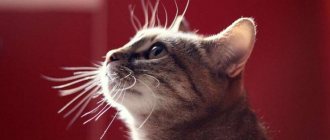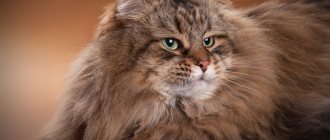Manul
This wild inhabitant of the Caspian plains has been known to science since 1782. The Pallas's cat is a high-altitude cat with the densest fur (hair density is 9 thousand/cm2. Thanks to the fur coat, the Pallas's cat can withstand frosts down to -50 Celsius. The savage feeds on a variety of rodents, including hares. In terms of behavior, the animal is not aggressive and is rarely the first to get into a fight, however, it can give an answer to any offender.
Pallas' cats live in rocky crevices or burrows, adhere to a sedentary lifestyle and are perfectly camouflaged in the steppe thanks to their spotted color.
Although the manul's parameters are similar to an ordinary domestic cat, the physiology of this animal is different:
- Pallas cats are more vulnerable to infections because the immune system of these animals has not experienced contact with viruses and bacteria.
- The pupils of the Pallas's cat always maintain a rounded shape, without turning into slits.
- Once in captivity, the Pallas's cat refuses to reproduce.
- A female Pallas's cat gives birth once a year.
Relationships with people
Scientists believe that the domestication of cats occurred more than three thousand years ago. The Egyptians were the first to allow cats into their homes. And the ancients can be understood: the animal not only perfectly guarded food warehouses, but also rose to the rank of a deity. But it is difficult to understand a cat: it is still not clear why an independent, freedom-loving animal needed to live under the same roof with a person. Perhaps the Murkas needed universal adoration? A lot of arguments can be given in favor of this version:
- Cats have an excellent sense of intonation in the human voice. When addressing your pet harshly, remember that he will definitely feel it. But a sense of self-superiority will not allow the cat to either admit or agree with your opinion.
Murki meow only “for people.” In the company of cats, furry ones use other sounds. For unintelligent people, animals “invented” hundreds of variants of “meow”, naively believing that a person distinguishes the meaning of each of them.
- The tail serves as a kind of mood indicator. Raised vertically and slightly quivering means the cat is happy to see you. Lifelessly drooping, most likely, indicates the Murka’s reluctance to have anything to do with you. If a pet swings its tail from side to side, then it is probably deciding on something: to enter the room or not to enter, to eat or sleep. Agree, this is a matter of utmost importance.
- Cats don't always rub against humans out of friendliness. Most often, the musk smells a foreign scent on “its” person and, with the help of its scent, tries to kill someone else’s. The same explains the habit of tailed animals to sleep on clothes and new things.
- Licking belongs to the same category of gestures. If the cat begins to actively “look after” you, most likely she considers you a representative of her “herd”. And you should smell like her and generally urgently need tenderness.
- A cat tramples its owner's stomach - there is a reason for pride. The person has pleased the pet in all its whims and can calmly enjoy the neighborhood. If the cat also nudged you with its forehead, rejoice, you’ve hit a real jackpot of furry emotions.
- Cats act as a sedative. In families where furry animals live, there are fewer quarrels and significantly lower stress levels.
- Most house murkas bury traces of their vital activity. But if the animal does not try to hide its “deeds,” it tells the person: “I am not afraid of you.” This is in some way a sign of aggression or competition.
Attachment to the owner
In 2007, Edwards and other scientists conducted an unusual experiment to test how attached cats are to their owners. As part of the experiment, the cat was left alone in a room with either a stranger or its owner. While in the room, the cats played only with their owner, while they were wary with the stranger. Also, in the presence of the owner, they were more curious and active. Whether alone or with a stranger, the cat tended to spend more time alert and sitting by the door.
Cats also experience separation anxiety, which also indicates that they feel attached to their owners. When cats are separated from their owners, they are more likely to exhibit stress behaviors such as urinating and defecating in inappropriate places, excessive vocalization (or simply meowing), destructiveness and excessive grooming.
Fluffy record holders
The longest cat Stewie
The Guinness Book of Records also contains interesting facts about cats:
- The longest-living record holder was the cat Creme Puff from Texas. He lived for 38 years. And the oldest cat lives in Australia. She was born in 1977.
- The most famous mousetrapper was the cat Towser, who lived at the whiskey factory. During his 21 years of service, the furry hunter killed more than 28,000 rodents. A monument was erected in honor of the faithful “servant”.
- The most well-fed cat is considered to be Himmy, who weighed 21 kilograms and, thanks to a waist measuring 84 centimeters, was included in the Book of Records.
- The longest cat in the world was, of course, the Maine Coon. Its length was 123.19 cm
- The most notorious traveler is the cat Hamlet, who escaped from his carrier during a flight. Seven weeks later, the fugitive was found in the cabin. The distance that the cat “flew” was about 600 thousand km.
- The record for the largest number of cats living in one house was set in Canada. The couple Jack and Donna kept 689 pets at the same time.
- A cat named Mincho has set one of the strangest records. She climbed up a tree and didn’t get down... for six years. Living at the top, the pussy managed to give birth to kittens three times.
- A fertility record was set in Africa: a Persian cat gave birth to 14 kittens. In 1970, there was a cat in Britain who also gave birth to 19 kittens, but only 14 of them survived.
- Today, Mr Peebles is considered the smallest cat, weighing 1.35 kg with a height of just over 15 cm.
Incredible abilities, mystical stories
The process of a cat falling always occurs the same way: the animal sequentially straightens its head, then its back, legs, and finally bends its back to soften the impact on the ground.
Mysticism or unusual abilities. Many cat owners have noticed medicinal properties in their pets. There is even scientific feline therapy - an area of traditional medicine that uses contacts with representatives of the cat family for therapy and prevention. It has been noted that the average owner of furry pets suffers from heart attacks and strokes three times less often than other people. Psychics claim that purrs have the gift of harmonizing a person’s aura.
The height of a cat's jump is five times the height of the animal.
Thanks to the hunting instincts of pussies, 33 species of birds and rodents have disappeared from the face of the Earth.
The Catholic religion attributed kitties to kinship with evil spirits. In our country, a cat was considered a symbol of prosperity and a valuable gift.
The cat is the only animal that is not mentioned in the Bible. Nobody knows why.
Biologists have proven that cats react to seismic activity.
In fairy tales and legends, cats are often endowed with paranormal abilities. Every furry owner has noticed the detached gaze of a pet, looking into the distance and following something, someone invisible to humans. Part of the mystery of the cat's appearance is its habit of sleeping during the day and hunting at night. But how else can you catch a mouse?
There are sinister superstitions that cats can steal a person's breath in their sleep. Such prejudices are rooted in the Middle Ages, when people tended to see magic in any creatures and events.
The cat calmly washes itself on a sunny day, and in anticipation of bad weather, curls up to keep warm. Restless behavior of a pet means bad weather, peaceful sleep means warm days.
Thanks to their sensitivity to ultrasound, cats can hear conversations between dolphins and domestic rodents.
The famous physicist Nikola Tesla decided to study electricity after receiving an electric shock from a cat.
Apart from a cat, not a single animal can survive falling from a height of nine floors. A cat named Andy broke this record by surviving a fall from 16 floors.
According to beliefs in Britain and Australia, the black kitty brings success.
Cats have a third eyelid that becomes visible only when the pet is sick.
According to Japanese beliefs, after death a purr becomes a spirit.
Instincts of wild cats - interesting facts
The hunter kitty is capable of keeping watch in front of several rodent burrows at once. The purr's field of vision is 150% greater than that of a human and is 187°.
Domestic kitties, like their wild relatives, prefer to sleep at altitude.
In case of an unexpected fall, the inner ear helps the cat to orient itself and fall on its paws. The mechanical “rudder” at the moment of a sharp loss of altitude is the tail. A tenth of all bones are concentrated in this part of the body.
Most cats are not prone to stirring up conflicts. Having marked the territory, purrs do not attack, but protect their zone of influence. Fighting cats finish the fight very quickly, using their fangs. Wild animals bring this process to perfection by biting the opponent's neck.
Of all the cats, only the cheetah has not learned to retract its claws. But this wild kitty can accelerate to 110 km/h, which is much faster than the speed of a horse.
Among wild cats, only lions live in communities (prides).
The ability to lift the tail vertically upward is characteristic only of domestic kitties.
Albinos are rare among cats. The most famous white animals are Bengal tigers.
All members of the family love meat. The only vegetarian is a wild cat from the island of Sumatra, which prefers fruit.

